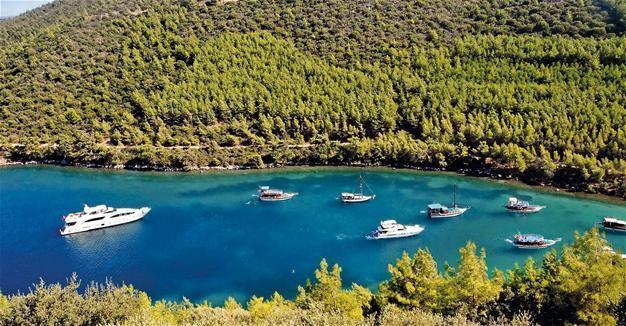Turkey’s protected sites gets reviewed, introduces new categorization
Aysel Alp – ANKARA

DHA Photo
Turkey’s 2.5 million hectares of protected sites have undergone a review during a categorization of the areas was replaced by three different categories.The Environment Ministry’s scientific research project, which was launched in 2014 and covered Turkey’s 2,430 natural protected sites, will come to an end at the end of 2016, prompting authorities to re-map the sites, change their boundary lines and revise the actions that are permitted to be carried out within them.
Divided into 22 zones, the protected sites’ revision was given to private companies whose teams are made up of ecologists, animal experts, hydro-geologists, landscape architects, survey engineers and geography experts.
Meanwhile, works in the southeastern province of Şanlıurfa were suspended due to security reasons.
Kemalettin Cengiz Tekinsoy, the ministry’s chief of the General Directorate for Protection of Natural Assets, said the revision work was initiated because they found that some sites listed among the protected sites no longer possessed the required characteristics.
“For example, the Salt and Beyşehir lakes are currently listed as first-category protected sites. Over time, due to various reasons, they have dried out and their borders have shrunk. Its status as a protected site cannot be ended, but its borders should be revised,” Tekinsoy said.
He added that with the new system, they aimed to oversee the “protection and usage balance that was prevalent worldwide but was lacking in Turkey.
“The new system is more protective than the old one. There are no constructions in sites listed as first category. In the second one, the maintenance of traditional village houses will be permitted, for example, a wooden terrace may be built. In the third category, there are criteria for sustainable areas. Here, very low-development tourism facilities and houses may be built,” Tekinsoy said, while adding development levels in permitted areas could be increased for wider areas within the protected site borders to “prevent the tourism sector from being suffocated in a narrow area.”
Works in the Çeşme and Seferihisar districts of the western province of İzmir along with the Tünektepe area of Antalya, as well as the Beyşehir area of the Central Anatolian province of Konya, have also been completed.
The new system introduces three categories for protected sites, which will differ in content compared to the previous one. For the first one that is expected to be announced by a cabinet decision, no initiative other than scientific research will be permitted. The second category will not permit constructions either, but the third one will allow the slow development of buildings and tourist facilities.
















